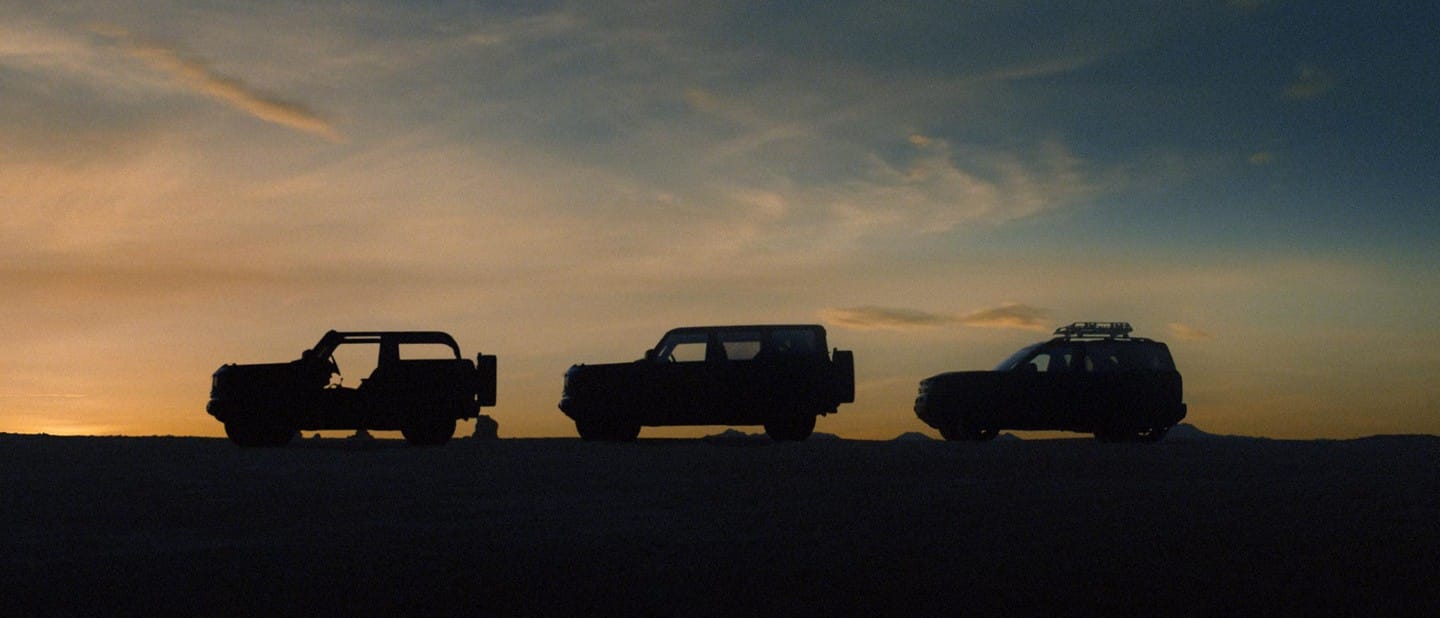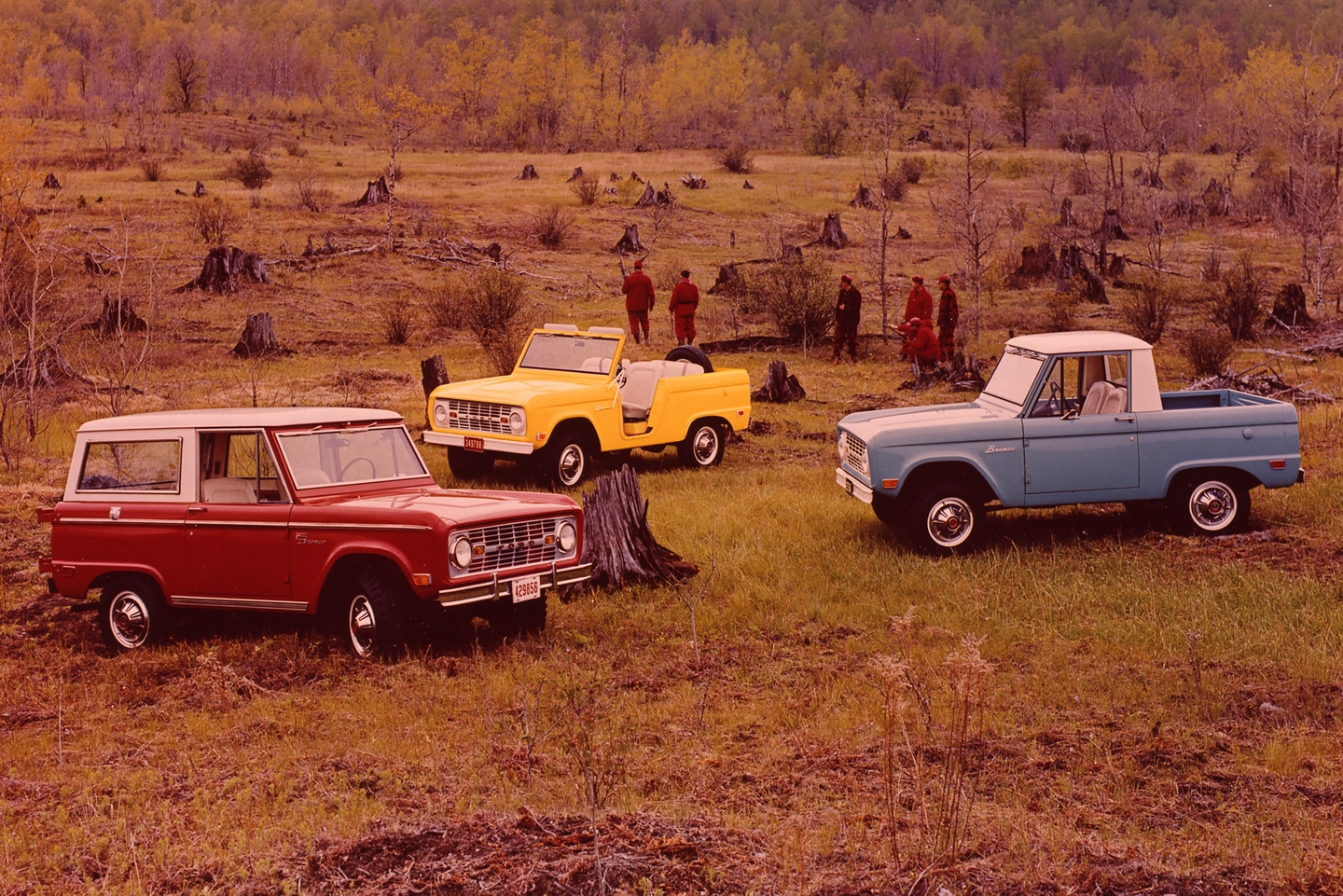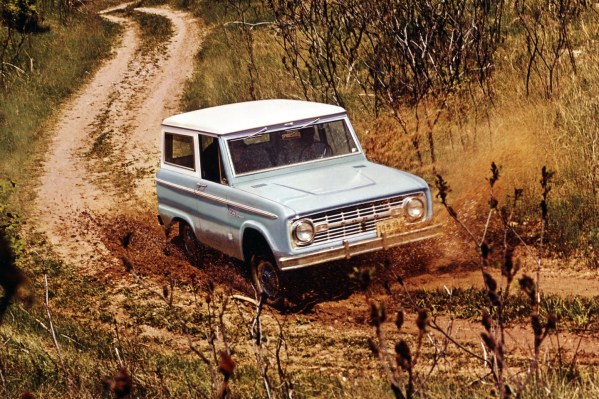Ford is finally taking the wraps off the reborn Bronco next week. Literally. The company has teased the vehicle for months, showing a camouflaged SUV bouncing through rocky streams and charging over dusty hills. This week, the wraps come off and the sheet metal will finally be exposed.
The launch of the Bronco looks to be a masterclass in nostalgia. For the last few weeks, Ford has been feeding journalists with media assets — pictures, staged interviews and upcoming advertisements. I’ve yet to see the full vehicle because in the end, Ford is not relying on the Bronco itself to drive sales, but rather, is digging deep into the power of nostalgia to move the Bronco off lots.
Recalling the past can help companies develop a unified theme around a product or service. In this case with the Bronco, only recalling part of the past helps companies dial in messaging. With Ford, the company wants consumers in agreement: This is a tough vehicle and it’s always been a tough vehicle. Forget about OJ, these adverts say. Instead, look at how the Bronco was used by two burly men bounding over the rolling hills of a cattle ranch. Ford is digging deep into American lore to show the Bronco as a rugged conqueror of the frontier instead of a conqueror of parking lot flowerbeds.
The Bronco is an iconic American vehicle. It wasn’t the best-selling nor the best-performing vehicle in its class. It had reliability issues and was often underpowered and outclassed by competitors. And yet, like the Mustang, it was a hit for Ford. In 1966 Ford unveiled the Bronco as a competitor to the Jeep CJ-5 and International Harvester Scout. Ford took the Bronco racing and racked up wins in long-distance endurance races. Over its 31-year run, the Bronco remained true to itself as a two-door, sport utility vehicle.
The upcoming model is set to be different than the past. Ford is relaunching the Bronco as a family of vehicles with three models at launch. Little is known about the difference at this time, though the family appears to include a two-door off-roader, four-door version and an entry-level sport model.

Image Credits: Ford
The launch of the new Bronco is similar to how Ford launched the retro Mustang in 2005. At the time, the Mustang was coming off decades of stale designs and lagging sales. The Fox body Mustang of the 80s was boring at best (though the 5.0 engine is notable), and the swooping design of the ’90s model was uninspired. In 1999, Ford launched a sharp, modern take on the Mustang, and yet in a few years, it was time for something new.
The reborn Mustang of 2005 hit all the right marks. The car industry was dabbling in retro vehicles with the Plymouth Prowler, the Chevy SSR and the Ford Thunderbird — all low-selling, but exotic, halo cars. The 2005 Mustang burst onto the scene and recalled the best of the original Mustang with the right shape paired with modern conveniences. Even today, through the 2020 models, vestiges of the retro Mustang are still visible on the latest models. It’s the top-selling car in its class.
The technology industry is naturally against the idea of nostalgia. For the most part, it sells its wares based on the thought of futuristic ideals. Forget about the past, it often says, and buy the latest phone with a 5% better battery life.
But nostalgia is a powerful feeling, and Ford is going to use the old Bronco to sell the new Bronco, just like Nintendo uses past games to sell new games.
The past can sell the future
Nintendo is different from most technology companies. The gaming company has continuously demonstrated how it sells new products by using rosy memories of old products. A Mario or Zelda game launches with nearly every generation of its gaming systems. For gamers, there’s little that stirs the old soul like a revived character.
Nintendo’s latest attempt is The Legend of Zelda: Link’s Awakening. It’s a remake of a Zelda game from 1993, the first one to hit the Game Boy platform. The Switch game is a faithful recreation of the original, complete with a quasi top-down, point-of-view game style. I loved it, perhaps because I loved playing the original while hiding under my bedsheets, using a flashlight to light my Game Boy’s screen.
Nintendo has done this before. In 1998, it revived some of its first titles in the form of Nintendo Mini Classics. At the time, the tiny Tamagotchi was a hit. The keychain device was redefining gaming, and Nintendo came up with its version. The Nintendo Mini Classics was similar to a Tamagotchi and loaded with a different classic title: Donkey Kong, Snoopy Tennis, Super Mario Bros., Tetris.
When launching the Wii, Nintendo made a selection of its back catalog available through the so-called Virtual Console. This program hit the Wii U and 3DS. The Nintendo Switch has a similar option but accessible through a subscription service called Nintendo Switch Online.
Nintendo seemingly understands that through careful curation, nostalgia is a powerful motivator. In 2016 Nintendo released the NES Classic Edition, a mini gaming system pre-loaded with a handful of classic Nintendo games. Nintendo sold about 2.3 million units during its six-month run and was one of the hottest Christmas gifts in 2016. Used systems still command a premium on resale sites.
Likewise, Sony and Sega followed suit. Sega’s mini retro console was also a hit. Sony’s was not. All three systems followed the same playbook: release a mini gaming system loaded with classic games and present them to gamers with modern conveniences.
Sony’s gaming system was widely panned for its poor presentation. It just didn’t work well. Nostalgia only works when it’s handled carefully and lines up with consumer expectations.

Image Credits: Ford
With the upcoming Bronco, Ford is tapping into consumers’ memories of a 4×4 Bronco bouncing over rocks and hauling coolers of beer to the beach. If it works as advertised, consumers will likely follow.
The original Bronco offered buyers an alternative to a Jeep or International Harvester Scout. And since it was from Ford, it was more widely available at the time. The design was simple enough with a square body, two doors, and removable back cover. Ford updated the Bronco in 1978, stretching the body two feet longer and 10-inches wider. The 1978 version was basically a pickup with a removable fiberglass hard top cover. In 1980, the Bronco was updated again with an improved chassis, but was starting to look out of place among the smaller, gas-efficient cars of the 1980s. Ford updated the Bronco again in 1987 and 1992, each time smoothing out the sheetmetal to keep with current trends.
Throughout its lifecycle, the Bronco remained a two-door sport utility vehicle, but as Ford updated the vehicle, reliability problems plagued the truck.
Now, in 2020 on the eve of the launch of the new Bronco, Ford is quick to point out that the original codename for the Bronco project was G.O.A.T. — meaning, Goes Over Any Terrain. But really, as many owners from the ’80s will profess, a more suitable code name might be F.O.R.D. — meaning, Found On Road Dead.
General Motors has a deeper catalog than Ford but has stumbled rereleasing classics. Often, when the General revives nameplates, like the Pontiac GTO or Chevy Blazer, they’re affixed to a vehicle that doesn’t line up with nostalgic memories.
The original Chevy K5 Blazer hit the market in 1969, four years after the Ford Bronco. In many regards, it was superior and quickly started outselling the Bronco. It was more sturdy, offered more cargo space and just looked better to many. Despite what Ford’s marketing wants you to think, it was the Blazer and not the Bronco that defined a generation of sport utility vehicles. For 25 years, the large, two-door Chevy Blazer and its GMC counterpart were the de facto American-made, large off-road vehicle. While the Jeep was king, the Blazer enticed many buyers with its superior utility.
In 1993 General Motors introduced another Blazer, a small SUV built off Chevy’s small truck platform the S-10. The shared name was confusing, but the differences were apparent. The S-10 Blazer was a small SUV designed for moving people while the K5 Blazer was an SUV designed for moving over things.
It’s the K5 Blazer that most people associate fondly with the Blazer nameplate, not the S-10 Blazer.

Image Credits: Chevrolet
In 2018, Chevy reintroduced the Blazer, but instead of tough off-roader, the new Blazer is a sporty, mid-size crossover. By all accounts, it’s a solid vehicle with competent handling and power. But it’s not a Blazer — at least not the real K5 Blazer.
The Chevy Blazer mishap demonstrates the danger of recalling nostalgia. It must align with consumers’ expectations.
Few cars are more iconic than the Pontiac GTO. Like the Chevy Blazer, the GTO defined a vehicle segment and became an iconic nameplate for General Motors. In 2004 General Motors revived the GTO in the American market by slapping the name on an existing Australian model. It failed and was only produced for two years.
By all accounts, the revived GTO was a fantastic car, but it lacked the character needed to wear the GTO badge. Car fans remember the GTO as a rowdy, in-your-face muscle car with ram air on the hood and a long, powerful body. Instead, Pontiac released a GTO with soft lines, a pleasing face, and body shape that could be mistaken for a gas-sipping economy vehicle. Yet under the hood was a massive V8 and enough power to rip up tires. The performance didn’t matter. It wasn’t a GTO and was quickly canceled.
Resetting expectations
Using nostalgia as a sales tactic allows companies to focus consumer’s attention on a familiar subject. Creating a new brand requires companies to create the universe in which that brand lives in. With retro products and advertisements, the universe is already created; it just has to be recalled and focused.
Consumers often have pre-set expectations around the past. This is the challenge that Ford and Nintendo have often cleared where General Motors has faltered. When GM launched the reborn GTO, it needed to reset consumer’s expectations away from the muscle car past and into the present time of highway cruisers. That didn’t happen and the car failed to find buyers. With the new Blazer, GM did a better job, showing the Blazer in ritz shopping centers and cruising down the highway. It was clear from the start that this Blazer was competing with sporty crossovers and not off-roading 4x4s.
The Bronco needs to be a Bronco. From what I’ve seen, Ford is getting it right and has a marketing plan to align consumers with the product is built. Without the marketing efforts, consumers will be left to their memories of the product, and they might not line up with Ford’s vision.
To help with this effort, Ford is releasing three models: a serious two-door off-roader, a four-door version and a lower-cost mass-market edition. The Bronco brand will offer a vehicle that will reach into different consumer demographics. This effort will help satisfy those who remember the Bronco differently. There will be a Bronco for moving people and a Bronco for moving over serious terrain.
In the end, Ford no doubt hopes all the models will help recall nostalgic memories of off-roading adventures instead of a slow highway chase.
